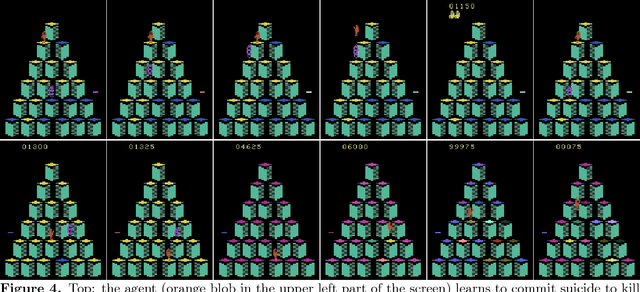Guillaume Beslon
Variable length genetic algorithm with continuous parameters optimization of beam layout in proton therapy
May 17, 2022



Abstract:Proton therapy is a modality in fast development. Characterized by a maximum dose deposition at the end of the proton trajectory followed by a sharp fall-off, proton beams can deliver a highly conformal dose to the tumor while sparing organs at risk and surrounding healthy tissues. New treatment planning systems based on spot scanning techniques can now propose multi-field optimization. However, in most cases, this optimization only processes the field fluences whereas the choice of ballistics (field geometry) is left to the oncologist and medical physicist. In this work, we investigate a new optimization framework based on a genetic approach. This tool is intended to explore new irradiation schemes and to evaluate the potential of actual or future irradiation systems. We propose to optimize simultaneously the target points and beam incidence angles in a continuous manner and with a variable number of beams. No \textit{a priori} technological constraints are taken into account, \textit{i.e.}~the beam energy values, incidence directions and target points are free parameters. The proposed algorithm is based on a modified version of classical genetic operators: mutation, crossover and selection. We use the real coding associated with random perturbations of the parameters to obtain a continuous variation of the potential solutions. We also introduce a perturbation in the exchange points of the crossover to allow variations of the number of beams. These variations are controlled by introducing a beam fluence lower limit. In this paper, we present a complete description of the algorithm and of its behaviour in an elementary test case. The proposed method is finally assessed in a clinically-realistic test case.
Towards the optimization of ballistics in proton therapy using genetic algorithms: implementation issues
May 17, 2022



Abstract:The dose delivered to the planning target volume by proton beams is highly conformal, sparing organs at risk and normal tissues. New treatment planning systems adapted to spot scanning techniques have been recently proposed to simultaneously optimize several fields and thus improve dose delivery. In this paper, we investigate a new optimization framework based on a genetic algorithm approach. This tool is intended to make it possible to explore new schemes of treatment delivery, possibly with future enhanced technologies. The optimization framework is designed to be versatile and to account for many degrees of freedom, without any {\it a priori} technological constraint. To test the behavior of our algorithm, we propose in this paper, as an example, to optimize beam fluences, target points and irradiation directions at the same time. The proposed optimization routine takes typically into account several thousands of spots of fixed size. The evolution is carried out by the three standard genetic operators: mutation, crossover and selection. The figure-of-merit (or fitness) is based on an objective function relative to the dose prescription to the tumor and to the limits set for organs at risk and normal tissues. Fluence optimization is carried out via a specific scheme based on a plain gradient with analytical solution. Several specific genetic algorithm issues are addressed: (i) the mutation rate is tuned to balance the search and selection forces, (ii) the initial population is selected using a bootstrap technique and (iii) to scale down the computation time, dose calculations are carried out with a fast analytical ray tracing method and are multi-threaded. In this paper implementation issues of the optimization framework are thoroughly described. The behavior of the proposed genetic algorithm is illustrated in both elementary and clinically-realistic test cases.
The Surprising Creativity of Digital Evolution: A Collection of Anecdotes from the Evolutionary Computation and Artificial Life Research Communities
Aug 14, 2018



Abstract:Biological evolution provides a creative fount of complex and subtle adaptations, often surprising the scientists who discover them. However, because evolution is an algorithmic process that transcends the substrate in which it occurs, evolution's creativity is not limited to nature. Indeed, many researchers in the field of digital evolution have observed their evolving algorithms and organisms subverting their intentions, exposing unrecognized bugs in their code, producing unexpected adaptations, or exhibiting outcomes uncannily convergent with ones in nature. Such stories routinely reveal creativity by evolution in these digital worlds, but they rarely fit into the standard scientific narrative. Instead they are often treated as mere obstacles to be overcome, rather than results that warrant study in their own right. The stories themselves are traded among researchers through oral tradition, but that mode of information transmission is inefficient and prone to error and outright loss. Moreover, the fact that these stories tend to be shared only among practitioners means that many natural scientists do not realize how interesting and lifelike digital organisms are and how natural their evolution can be. To our knowledge, no collection of such anecdotes has been published before. This paper is the crowd-sourced product of researchers in the fields of artificial life and evolutionary computation who have provided first-hand accounts of such cases. It thus serves as a written, fact-checked collection of scientifically important and even entertaining stories. In doing so we also present here substantial evidence that the existence and importance of evolutionary surprises extends beyond the natural world, and may indeed be a universal property of all complex evolving systems.
 Add to Chrome
Add to Chrome Add to Firefox
Add to Firefox Add to Edge
Add to Edge